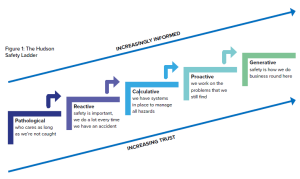The Charity
Aviation
Maritime
M1979

Initial Report
A pilot embarked on a loaded log-carrying vessel which was about to depart. There was no safe walkway over or around the logs. The only way the crew could access the forecastle was either by balancing on the railings around the ship’s side or by climbing over the logs. None of the crew wore the right PPE to climb safely over the logs, and those balancing on the ship’s side were at risk of falling overboard.
The pilot raised the matter with the master and alerted the authorities to these significant safety breaches.
CHIRP Comment
The IMO’s Code of Safe Practice for Ships Carrying Timber Deck Cargoes (the 2011 TDC Code) applies to timber carrying vessels over 24m. Although it is not mandatory, it provides safety guidance that says:
(2.8.2) “Special measures may be needed to ensure safe access to the top of and across the cargo” and
(2.8.5) “A safe walking surface not less than 600mm wide should be fitted over the cargo” alongside a wire lifeline.
The suggested PPE is a safety harness and lifeline and suitable safety footwear. (It is recommended that ankle boots and spiked overshoes are used to prevent slipping and ankle injuries).
Because ships are under commercial pressure to sail as soon as their cargo is loaded, there might not be time to install a safe walkway to the forecastle. This should have been considered part of the vessel’s risk assessment for unberthing and alternative safety measures, such as a temporary walkway, should have been provided. CHIRP has previously received reports of serious injury occurring in similar situations.
Key Issues relating to this report
Culture – A good safety culture is one in which all reasonable steps are taken to remove or reduce risks. If these steps are difficult to implement or take time to put into place, there is a real danger of ‘safety apathy’, and we no longer ‘see’ the risks. We tell ourselves that “the risks are the risks” or convince ourselves that the risks we are taking are ‘acceptable’. Where is your company on the Hudson Safety Ladder?
Alerting – The crew would have known that walking on a bulwark rail is dangerous, so what stopped the crew members from pointing this out? Did they feel empowered to raise the alarm, or were they afraid of the consequences? Would you raise the alarm if you saw this on your vessel?
Pressure – When working under pressure, we often prioritise completing the task over keeping ourselves safe.
Seafarers: Do you ever feel pressured to carry out an unsafe act? Do you ever discuss pressure workloads during safety committee meetings? What can you do to reduce workload pressure?
DPAs: is there inadvertent or deliberate pressure on the onboard managers (Captains & Chief Engineers) to cut corners to save time? How do you know?
Local practices – Loading and securing timber cargo is a high-risk operation. If you are not provided with the correct PPE, would you raise the matter with your head of department or through a company hotline?
This data type is not supported! Please contact the author for help.






